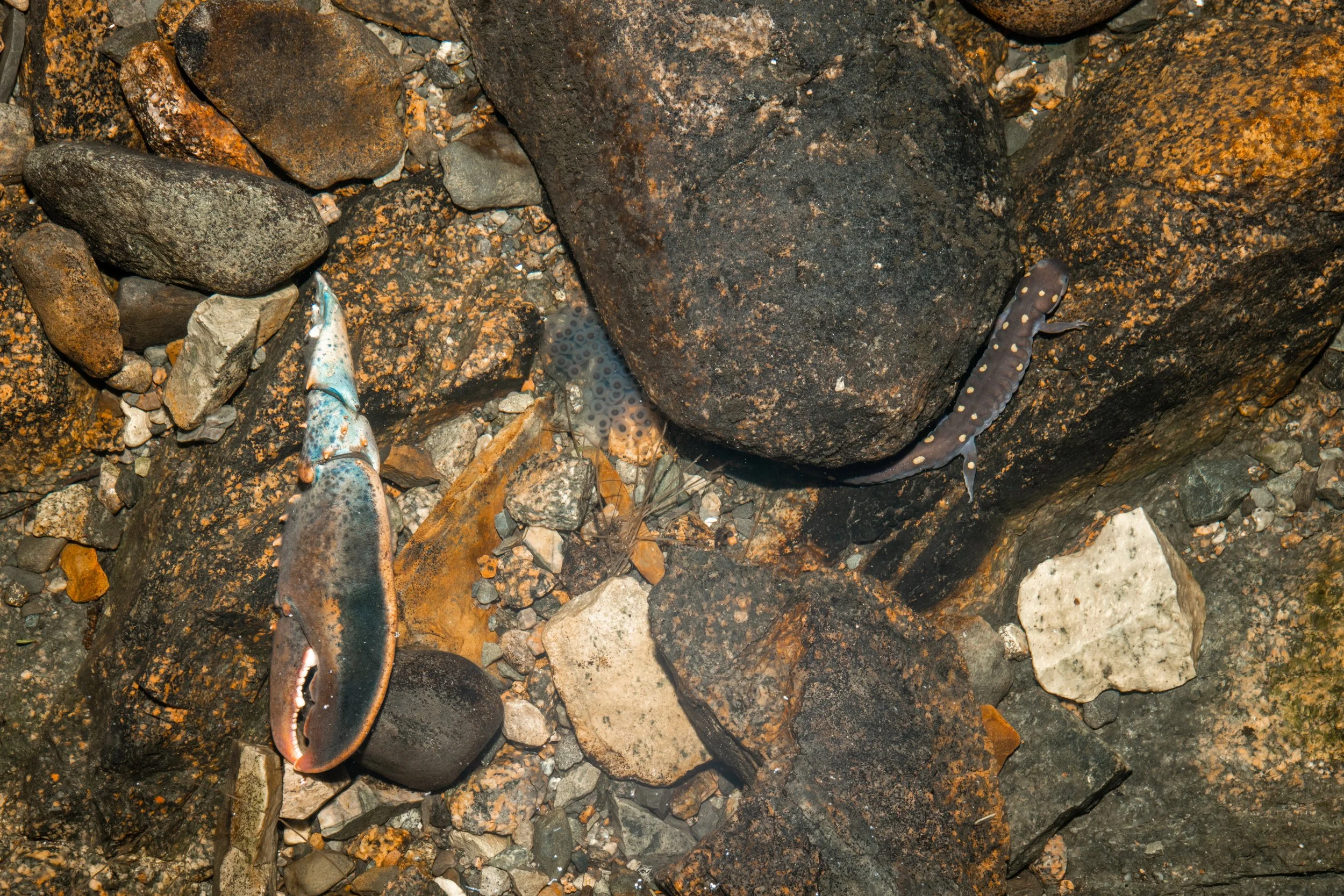Localized Adaptation to Elevated Salinity in Tide Pool-Breeding Salamanders
On the coast of Maine, we have discovered multiple breeding sites where spotted salamanders (Ambystoma maculatum) congregate to breed and lay eggs in rocky pools which lie just feet above the normal high-tide line. Exposed to the elements, these pools are regularly buffeted by sea spray and occasionally inundated by large waves, particularly during Atlantic storm season, which continues well into the springtime breeding season of the salamanders. Interestingly, amphibians are notoriously intolerant of saltwater, and, until recently, no salamander species had been associated with marginal marine aquatic habitats.
In the spring of 2022, I conducted ecological monitoring at two of these known populations with collaborators at College of the Atlantic and performed common garden experiments in the Muñoz Lab at Yale University’s Department of Ecology and Evolutionary Biology to compare survivorship and gross morphological development of embryos collected from these populations to inland populations across a range of salinities. Analyses of these results are ongoing, but may have important implications for the evolution and conservation management of coastal salamander species in light of rising sea levels due to climate change.
Habitat Affinities of Fossil Turtles as Illuminated by Isotope Geochemistry
Fossils usually provide the clearest available glimpses into the past, and studying them has proved utterly invaluable in our efforts to disentangle the evolutionary history of life on our planet. Traditionally, paleontologists looked at the shape of fossil material to reconstruct the form of extinct organisms and combined this evidence with what we know about living organisms to infer their behaviors and the function of their structures when they were alive. An important body of evidence used to make inferences about the ecology of past lifeforms is what kinds of rocks the fossils were found in. The trouble is that, thanks to surface processes of the earth like erosion and transport, the places where where dead bodies were buried by sediments and ultimately fossilized may not have been the habitats in which the organism actually lived. When we find body fossils for an animal that looks like it probably lived on land along with some fossil trees in open marine sediments, we know that something is fishy is going on.
In collaboration with Dr. Jordan Wostbrock in the Department of Earth and Planetary Sciences at Yale, I analyzed the oxygen isotopes in the bones of modern aquatic turtle species to identify the geochemical signatures of these habitats, and then analyzed the oxygen isotopes of fossil turtle bones to cross-reference against the modern habitat signatures. Our results revealed that some extinct turtles which have been reconstructed as marine species due to being found in near-shore marine sediments were more likely to actually live in freshwater environments before their bodies were carried to sea and fossilized. Geochemical proxies for habitat hold great potential in settling the debate over ancestral habitats of turtles and their kin, as well as many other major vertebrate clades. We are in the process of confirming our results using alternative geochemical methodologies and anticipate publishing this body of work in the coming year.
